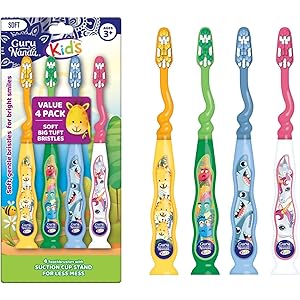The Honest Company Clean Conscious Multi-Use Wipes, Unscented Hypoallergenic Baby Wipes for Sensitive Skin, 99% Water Plant-Based Compostable Wipes, Pattern Play, 720 Count
$44.99 (as of October 25, 2025 00:05 GMT +00:00 - More infoProduct prices and availability are accurate as of the date/time indicated and are subject to change. Any price and availability information displayed on [relevant Amazon Site(s), as applicable] at the time of purchase will apply to the purchase of this product.)Understanding Breastfeeding Techniques
Breastfeeding techniques are essential for new mothers to ensure that their infants receive the necessary nutrition and bonding experience. Proper positioning is one of the most critical aspects of effective breastfeeding. The cradle hold, cross-cradle hold, and football hold are popular methods that can help mothers find comfort while feeding their babies. Each technique has its advantages, and mothers may need to experiment to discover which one works best for them and their child.
The Importance of Latching
A proper latch is crucial for successful breastfeeding. When a baby latches correctly, it helps to prevent nipple pain and ensures that the baby is getting enough milk. Signs of a good latch include the baby’s mouth covering a significant portion of the areola and the absence of pain for the mother. If a mother experiences discomfort, it may indicate that the baby is not latched correctly, and adjustments should be made promptly.
Breastfeeding Positions
Different breastfeeding positions can significantly impact the feeding experience. The side-lying position allows mothers to rest while feeding, making it ideal for nighttime feedings. The laid-back position promotes a natural breastfeeding experience, allowing the baby to find the breast on their own. Each position offers unique benefits, and mothers should feel free to switch between them as needed to enhance comfort and effectiveness.
Common Breastfeeding Challenges
Despite the many benefits of breastfeeding, mothers may encounter various challenges. Issues such as sore nipples, engorgement, and low milk supply can arise. Sore nipples often result from improper latching, while engorgement can occur when the breasts become overly full. Low milk supply may be a concern for some mothers, but it can often be addressed through increased feeding frequency and proper hydration.
Overcoming Sore Nipples
Sore nipples are a common issue for breastfeeding mothers, but they can often be alleviated with proper techniques. Ensuring a good latch is the first step in preventing soreness. Additionally, using nipple creams or ointments can provide relief. Mothers should also allow their nipples to air dry after feedings and consider using breast pads to keep them dry and comfortable.
Managing Engorgement
Engorgement occurs when the breasts become overly full, leading to discomfort and difficulty in breastfeeding. To manage engorgement, mothers can try feeding more frequently or expressing milk to relieve pressure. Applying warm compresses before feeding can help stimulate milk flow, while cold compresses afterward can reduce swelling and discomfort. Understanding how to manage engorgement is vital for maintaining a positive breastfeeding experience.
Addressing Low Milk Supply
Low milk supply can be a source of concern for breastfeeding mothers. Several factors can contribute to this issue, including infrequent feedings or inadequate stimulation. To boost milk supply, mothers can try feeding more often, ensuring proper latch, and staying well-hydrated. Consulting with a lactation consultant can also provide personalized strategies to enhance milk production.
Breastfeeding and Nutrition
A mother’s nutrition plays a significant role in her breastfeeding journey. Consuming a balanced diet rich in vitamins and minerals is essential for maintaining milk supply and overall health. Foods high in protein, healthy fats, and whole grains can support lactation. Additionally, staying hydrated is crucial, as water intake directly impacts milk production.
Support Systems for Breastfeeding
Having a strong support system can make a significant difference in a mother’s breastfeeding experience. Partners, family members, and friends can provide emotional and practical support, helping mothers navigate challenges. Joining breastfeeding support groups or consulting with lactation consultants can also offer valuable resources and encouragement, fostering a positive environment for breastfeeding.
Long-Term Benefits of Breastfeeding
The long-term benefits of breastfeeding extend beyond infancy. Research indicates that breastfeeding can reduce the risk of certain health issues for both mothers and children, including obesity, diabetes, and heart disease. Additionally, the emotional bond formed during breastfeeding can have lasting effects on the mother-child relationship. Understanding these benefits can motivate mothers to overcome challenges and continue their breastfeeding journey.



